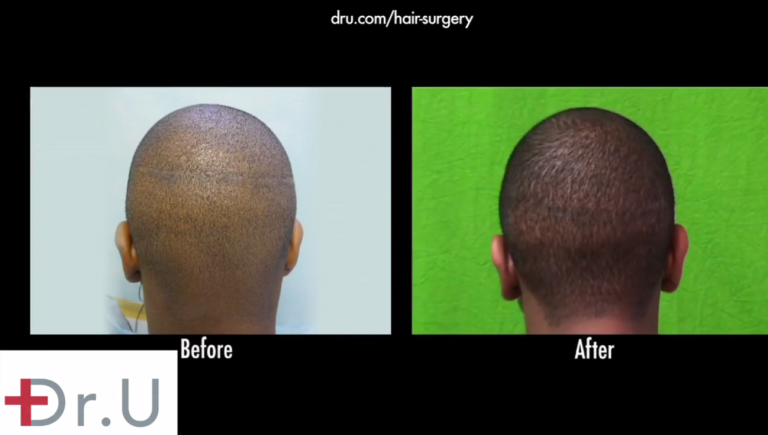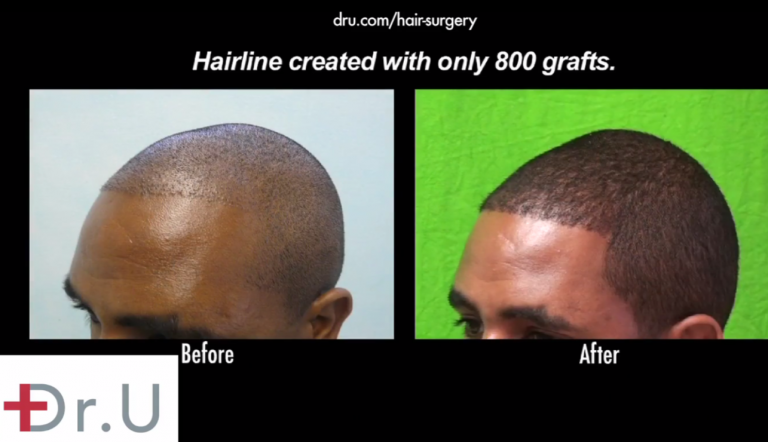The Challenges of Hair Loss Surgery For Black Patients and African American Hair Transplant Surgeons
Today’s hair transplant methods have come a long way in being able to produce impressively natural-looking coverage. However, conventional approaches do not offer a one-size-fits-all solution for everyone. Their shortcomings are especially clear in the case of most black patients.
Strip Surgery For African American Patients
Strip surgery produces a permanent linear scar on the back of the head. To keep this hidden, patients often choose to wear their hair longer. However, most black men prefer to wear their hair extremely short and closely cropped. Hair transplant linear scars would easily show through such hairstyles.
Since most black men prefer short, closely cropped hairstyles, strip procedures would not be the best choice for their long-term satisfaction.
Furthermore, many patients of African descent are genetically predisposed to developing keloidal scars. This type of scar tissue is thick, raised and often larger than the original size of the wound. According to the Henry Ford Health System, black patients are seven times more likely to form keloid scars on the head and neck.
Conventional FUE For African American Patients
As an alternative to strip surgery, today’s patients can choose linear scar free hair transplantation. This procedure is also known as Follicular Unit Extraction (FUE). Instead of scalpels, the extractions are performed with tiny punches. Conventional devices can avoid the issue of linear scars and the formation of keloids in patients. However, they are still incapable of producing the best success rates for African American hair transplants. The limitations of general FUE punches for this demographic are due to the following reasons:
- Curved shaped hair follicles
- Thicker dermal layer density
- Stronger anchoring tissue attached to the follicles.
The Issue of Curled Hair Follicles In Black Men and Women
Individuals of African origin have hair follicles with a uniquely curved shape. By comparison, the follicles found in other ethnic groups are straighter. The extent of the hair follicle curl is described in terms of the angle of C. Due to their shape, a more curved hair follicle will be less compatible with general, straight cylindrical punches. And they will be more susceptible to damage by these instruments.
The best success rates for African American hair transplants require the use of specially designed instruments like the UGraft Zeus.


